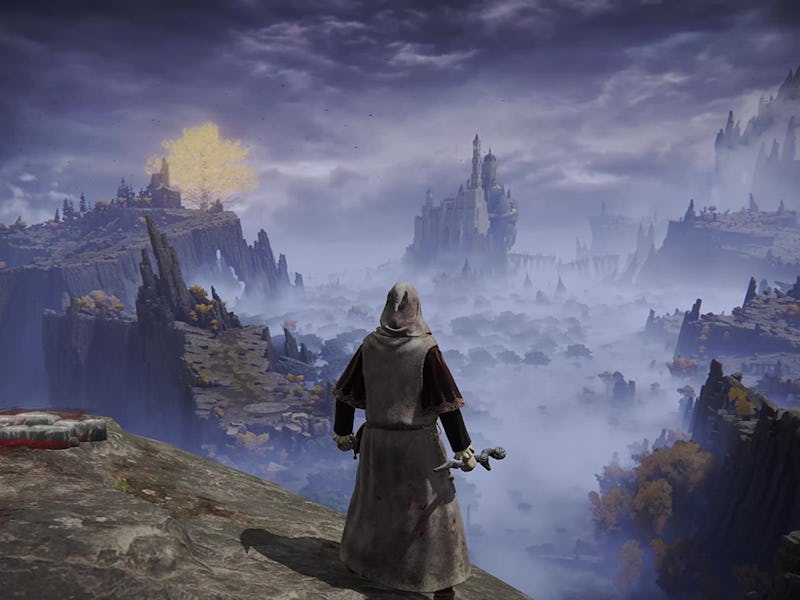
For the past 15 years or so, the “map game” has been popular ... too popular. A lot of games present vast open worlds littered with icons and an endless to-do list. Is this immersion? Or is this a chore simulator? Think Assassin’s Creed or Far Cry. While it’s satisfying to check things off a to-do list, the sense of wonder and organic discovery is often compromised by a busy map and UI. That’s one reason Elden Ring is so remarkable, as it completely bucks this trend while still offering a detailed map to help you on your way. Given its success, we hope to see fewer open-world games packed with icons going forward, with a greater emphasis on mystery and wonder instead.
Show, don’t tell
Franchises like Assassin’s Creed aren’t bad. In fact, the recent installments are some of the best in the series, with interesting environments to explore. But when you open up the map, what do you see? Dozens of icons, each telling you exactly what to expect. Once you visit a particular area and complete whatever objective awaits, you get a little checkmark, telling you it’s finished. Wow. That doesn’t mean completing each objective is dull — but the sense of mystery is completely stripped away since the icon tells you exactly what to expect from any given area. The checkmark also tells you there isn’t anything left to discover.
Though Elden Ring’s map does feature icons for Sites of Grace and other buildings, most of its contents remain mysterious, which is part of the allure.
Is this too much information?
In Elden Ring, few icons appear on the map, preserving the sense of mystery of nearly every area you encounter. Even if you open your map to try and figure out what lies ahead, there’s no telling what awaits in any given area. That means you could stumble upon a dark cave full of enemies, an abandoned church with useful items, or even a behemoth enemy that can take you out in one fell swoop.
Likewise, the lack of the checklist-style map makes it so that you never really know if you’ve fully explored an area, keeping you on your toes. The Souls games are famous for hiding secrets in plain sight, which is amplified in Elden Ring. For instance, a hidden city of pot men called Jarburg is found off the east side of a cliff in Liurnia, an area you’ve likely visited countless times.
Subverting expectations
Even traditional castles are littered with secrets that will almost certainly surprise you.
The checklist-style maps found in Ubisoft games often undermine the journey between two points. You know the most noteworthy encounters will only appear at points of interest, while the land between feels empty. And even when you get to a specific point of interest, you usually know what to expect since the map icon spoils what kind of objective awaits.
In Elden Ring, even if you know you’ll soon be entering a castle or dungeon, there’s no telling what to expect within those walls. You might encounter a maze-like courtyard full of gigantic severed hands that shoot magic at you, or even a seemingly friendly festival full of NPCs.
The thing is, it’s more common to have no idea what you’re stumbling into, and that’s the beauty of Elden Ring. Even Souls veterans are caught off guard when playing Elden Ring, with most areas featuring plenty of surprises. For instance, there’s an area called the Carian Study Hall that seemingly leads to a dead end, but there’s an item you can find that flips the entire building upside down (a la Castlevania: Symphony of the Night). You can then explore the inverted version of this area to find even more secrets.
Another interesting thing about the Elden Ring map is that its map contains numerous subtle symbols that are easy to overlook. These are drawn onto the map itself and cannot be interacted with like a traditional Site of Grace icon. Instead, they merely let you know that something is in a particular area, without spoiling what it is. After we realized this, we scoured the map to find any other little symbols we might’ve missed, making it exciting to revisit older areas of the map. But not all secrets have a symbol that corresponds with them, so you can’t solely rely on them to find everything in the game.
Elden Ring is wildly popular, peaking at 953,426 concurrent players on Steam alone during its second weekend. With this in mind, it’s possible other developers will look to Elden Ring’s map design and exploration mechanics for inspiration, ditching the once-popular checklist approach we’ve grown used to. And we hope that’s the case because Elden Ring is arguably the best example of exploration done right, one that will inspire many pale comparisons for years to come.